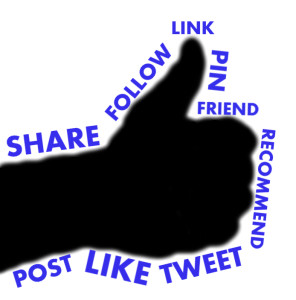by gabriel_sales | Feb 12, 2014
 While 93% of B2B companies are now engaged in content marketing, it seems many are still struggling to see their content have a direct impact on sales. An interesting survey from McKinsey suggests the reason for this has to do with the branding or messaging behind the content. The data shows that what companies think makes a good brand and what customers want from a brand are two different things.
While 93% of B2B companies are now engaged in content marketing, it seems many are still struggling to see their content have a direct impact on sales. An interesting survey from McKinsey suggests the reason for this has to do with the branding or messaging behind the content. The data shows that what companies think makes a good brand and what customers want from a brand are two different things.
The survey asked B2B customers what they cared about most when looking to select a company or brand. The three top responses were:
- Cares about honest, open dialogue with its customers and society
- Acts responsibly across its supply chain
- Has a high level of specialist expertise
However, when B2B companies were asked what branding message they were conveying to customers, the top three responses were:
- Role-models corporate social responsibility in its work
- Promotes and practices sustainability in its products or services
- Has global reach
These findings suggest B2B companies are missing an opportunity to connect with customers by talking past them. It seems that B2B companies may be attempting way more than they need to in their branding and marketing content.
Based on these responses, B2B companies seem to think they need to save the world. They seem to think customers want superheroes who can travel the world at lighting speed and solve the world’s environmental problems in their free time.
While customers would probably like that, it is not what they care most about while shopping for a B2B solution. Looking at the top responses, B2B customers simply want to know that you are genuine, responsible and good at what you do.
So, when coming up with your brand story and determining how to best tell that story through digital content, don’t over complicate or attempt to be something more than you are. Just explain what you do and how you do it in an authentic and helpful way.
For more on telling a consistent brand story, read What Confuses Your Prospect Most About Your Sales Process. Feel free to contact us with any questions.
by gabriel_sales | Jan 30, 2014
 As we have written about previously, regardless of what the next hot marketing technology or trend is, content will be the fuel that gets us where we want to go. While many companies choose to produce their marketing content internally, there are several reasons that sales outsourcing might be a more cost-effective and efficient solution.
As we have written about previously, regardless of what the next hot marketing technology or trend is, content will be the fuel that gets us where we want to go. While many companies choose to produce their marketing content internally, there are several reasons that sales outsourcing might be a more cost-effective and efficient solution.
Here are 3 reasons to consider sales outsourcing content creation:
1. Marketers today are expected to act as publishers.
If you look at Salesforce’s blog, they are posting about 7 articles per day. Pardot, one of the leading marketing automation companies in the US, posts at least one every day. Oracle tweeted over 60 times on January 29th.
While your business may not need to be tweeting at the same rate as Oracle, you do need to publish relevant content, and you need to do it frequently. If your company is on the smaller side, this work can exhaust your resources, especially if you do not already have trained writers on staff. Similar to sales outsourcing, by leveraging an outsourced individual/team to write your blog articles and post them to social media, you can quickly and cost-effectively produce more content—improving both sales engagement and SEO.
2. Outsourced content producers understand how to tailor content to fit different stages of the buying cycle.
Each of your prospects is in a slightly different place in their buying cycle, and in order to move on to the next phase, each is going to need to see something slightly different. Prospects early in their buying cycle need to see very basic, educational content that speaks to their specific pains. Prospects closer to purchasing need to see detailed case studies, comparisons, demo videos, etc.
If you are not yet producing different types of content to match the various stages of your buying cycle, an outsourced content production team can help. By helping to map out each stage of your sales process and then coming up with different pieces of content for each, an outsourced team allows you to be confident that your content is actually working to bring prospects through your pipe and directly contributing to ROI.
3. It allows you to stay focused on serving your customers and looking for new revenue opportunities.
If you are at a tech startup or smaller managed services company, you likely do not have all the time in the world to sit around and come up with new ideas for content all the time. Even if you can come up with some ideas, seeing them through to execution can be difficult when you constantly have more pressing matters to attend to.
By leveraging outsourced content producers, you can stay focused on your company’s highest value activities—leaving content production to the experts.
For more on the value of outsourcing content production or other sales and marketing functions, read Scale Your Business for Sales with Sales Outsourcing. Feel free to contact us with any questions.
by gabriel_sales | Jan 30, 2014
 Answer: A lack of consistency.
Answer: A lack of consistency.
In today’s fast-paced and technology obsessed world, it has been estimated that people are exposed to 3,000-20,000 marketing messages per day (NYT).
While that estimate seems rather high, it highlights the sheer enormity of marketing content out there—all competing for our attention and clicks. In this chaotic and competitive environment, how do you create content that stands out enough to get your prospects to convert and/or buy?
You create an authentic brand story, and then tell that story consistently across multiple channels.
Telling a consistent brand story does not mean saying the exact same words over and over again in all of your marketing content. It means creating a consistent impression or experience for your prospect every time they interact with your company. Saying the same words multiple times may play a part in that, but there are also many other factors go into creating consistency for your prospects.
Let’s look at an example of an inconsistent brand story experience to illustrate the importance of consistency.
Let’s say George receives a marketing email from a managed service provider. The email has little in the way of color or graphics; the content of the email is educational, and the tone of the writing is serious and professional. George reads the email and decides to click through to the additional content being offered, as he is someone who highly values professionalism in the workplace.
However, when George clicks through to the MSP’s content, he finds a page with neon colored graphics, pushy advertisements and informal language. At first, George is so confused that he wonders if he even clicked on the right link. After confirming the MSP did indeed send him to this flashy, ad-covered web page, George is left even more puzzled.
He wonders which of the two experiences the company actually provides. One story being told insinuates the MSP is an industry thought-leader and approaches their work with a high level of professionalism and seriousness. The other story implies the MSP cares more about aesthetics and has more of a bold, ‘in-your-face’ type of approach to business.
Only one of these stories is appealing to George. But, because he cannot figure out which of the stories is true just by viewing the content, he is going to move on to a competitor who provides him with a less confusing—and more consistent—brand experience.
While George’s story is fictional, the problem of inconsistent marketing and sales content is real and may cause you to miss out on revenue opportunities. To make the brand story your are telling more consistent, pay attention to:
- your tone of voice
- your level of formality
- the colors, graphics and other visuals you use
- your communication frequency
- the connotations of the words you use
- your social media posting style
By providing a more consistent brand experience for your prospects throughout the length of your sales process, they will be much more willing to trust you and therefore eventually, make a purchase.
To learn more about improving your B2B sales process, read “3 Reasons Your B2B Sales is Failing”. Feel free to contact us with any questions.
by gabriel_sales | Jan 24, 2014
 40% of Americans now use Facebook everyday. Whether we are aware of it or not, I think this has had some interesting effects on marketing.
40% of Americans now use Facebook everyday. Whether we are aware of it or not, I think this has had some interesting effects on marketing.
Most of us now scroll through our various social media feeds a couple of times throughout the day, and as we do, we constantly see Youtube videos, memes, Buzzfeed and Upworthy-type content—all competing for likes and shares.
This creates the impression that going viral and getting shares is the ultimate goal to be achieved. And for marketers, it fuels the desire to create marketing content that will make those ‘like’, ‘share’ and ‘retweet’ counts jump into the thousands.
While there is nothing inherently wrong with that approach, marketing content should always have a goal that is tied to business. If your only goal is brand awareness, trying to create viral videos or blog posts is a good strategy—viral content gets seen by more people. However, if your goal is to put prospects into the pipe or close deals, going for viral might not be appropriate.
This is because being viral does not equate directly to having value (i.e. cat videos). Turning the thousands of viewers of your content into prospects and leads generally requires providing some sort of value. What exactly that value is will vary greatly depending on the product or service.
In the B2C space, providing entertainment might be enough value to initiate a purchase. There is a lot less risk purchasing B2C products, which allows more room to be impulsive. In the B2B space however, where purchases are sometimes multimillion dollar enterprise software solutions, content that provides a few laughs is not likely going to be enough to get a contract signed.
In more complex, higher-risk sales, creating content that is valuable should trump your desire for creating content that goes viral. Content that provides value in these complex sales includes opinion’s of thought leaders, industry reports, software demonstrations, product comparisons, case studies, etc. This type of informative and fact-based content enables prospects to educate themselves on your product or solution, so they are able to make an informed purchase decision. While this type of content may not be as exciting or share-worthy as the latest Volvo ad, it does provide the type of value that will build enough trust to motivate a high-risk purchase.
If you would like to know more about creating valuable B2B marketing content, read “5 Reasons Your Content Isn’t Converting.” Feel free to contact us with any questions.
by gabriel_sales | Jan 22, 2014
 By now, most companies in the B2B space are blogging. According to a 2014 marketing report, the percentage of companies adopting blogging as a B2B content marketing strategy went up 11% from 2012.
By now, most companies in the B2B space are blogging. According to a 2014 marketing report, the percentage of companies adopting blogging as a B2B content marketing strategy went up 11% from 2012.
Because stuffing your blogs with keywords is no longer effective for SEO or sales, blogs in 2014 will continue on the trend towards more quality content. In addition to providing quality, here are three things to add to your B2B blogs in 2014 to help improve engagement and conversion:
1. Videos
As we’ve written about previously, 2014 is going to be a big year for video marketing. In terms of blogging, videos can help extend the message of your written text into a visually engaging format.
There are several good ways to add a video to a blog. You can do a video-focused style post, where the video is at the top and the written text is a brief summary of the content that can be found in the video. Some people may call this a vlog (video+blog). Another good option is to add a video to give an in-depth example of something referred to in the text. This is great when you are talking about something like a complicated technical process that can be better understood through visuals; and IT Business Edge recently stated 70% of B2B buyers view product demo videos before they select a vendor.
2. Social proof
In the new, buyer-dominated world of marketing, social proof is only going to rise in importance. One reason for this is that buyers are trusting each other’s opinions more and more and companies’ ‘opinions’ less and less.
In blogs, there are several ways you can demonstrate social proof. The first is attaching social sharing buttons to each post; you can see an example of this at the top of this post. You can also post blogs with customer testimonials or reviews. This allows your customers tell your story for you, and is a great way to help build trust early on in the sales cycle.
3. Second-stage content
For the most part, B2B blogs are pretty basic and can be easily scanned through in a matter of minutes. If your blogs are being used for brand awareness, early stage education lead generation, shorter and more basic blogs make sense, as you do not want to overwhelm your reader early on.
However, for both SEO and sales strategy, you may want to consider adding more in-depth blog content every once in a while. In regards to SEO, while the old ‘keyword’ focused Google algorithm sometimes rewarded short, keyword-dense blogs, the new Hummingbird algorithm is geared toward finding more quality, in-depth content. If there is something happening in your area of expertise, write a feature type article on it rather than a 300-500 word summary.
In terms of sales, having more substantive second-stage blogs can help with conversion. Because many B2B buyers now like to take themselves through the entire buying process on their own, they will thank you for giving them the detailed content that allows them to do that. If a prospect can find everything they need to make a buying decision on your site (educational content, product comparisons, technical demos, details on the engagement process, testimonials, etc.), they may not have any reason to look at other options.
For more tips on B2B blogging, read, “B2B Blogging – Why It’s a Double Win”. Please feel free to contact us with any questions.
by gabriel_sales | Jan 8, 2014
 If you’re in B2B, it is likely you know by now that ‘content is king’. But, what kind of content is going to be king in 2014? We think it is video.
If you’re in B2B, it is likely you know by now that ‘content is king’. But, what kind of content is going to be king in 2014? We think it is video.
Why? Here are three reasons:
1. It translates to less work for you.
One of the best ways to leverage B2B video marketing is to clone your top producers. By digitizing your early-stage sales pitch into video format, you no longer give that pitch over and over again every time a new prospect comes down the pipe. You can just send each new prospect a link to your pitch video, saving you the many hours you spend pitching to only vaguely qualified prospects.
2. It’s science.
According to Dr. Susan Weinschenk, also known as ‘the brain lady’, there are hardwired biological and psychological phenomenon that make video a more engaging and persuasive format than text. Weinschenk gives four reasons for this:
- The Fusiform Facial area makes us pay attention to faces
- Voice conveys rich information
- Emotions are contagious
- Movement grabs attention
~Watch her detailed presentation on the topic here
When presenting information in video format, the experience your prospect has is multi-dimensional (auditory and visual) and therefore deeper than the experience of a purely auditory (podcast) or purely visual (blog post) format. Because emotional connection plays such a large role in B2B sales, anything you can do to create a deeper or more emotional experience is good.
3. It’s measurable.
The importance of measurement and analytics is growing rapidly in B2B with the advent of marketing automation platforms and sales technologies along with the rise of customer relationship management. Videos are great for measurement and ROI reporting because they are easily trackable. Some video hosting platforms (like Wistia) allow you to not only track views, but also how long prospects are watching each video. In the case that most of your prospects stop watching at the one-minute mark, this will help you know when and how to refine your message.
For tips on leveraging B2B video, you can read our Tips for B2B Video Content Marketing. Feel free to contact us with any questions.
 While 93% of B2B companies are now engaged in content marketing, it seems many are still struggling to see their content have a direct impact on sales. An interesting survey from McKinsey suggests the reason for this has to do with the branding or messaging behind the content. The data shows that what companies think makes a good brand and what customers want from a brand are two different things.
While 93% of B2B companies are now engaged in content marketing, it seems many are still struggling to see their content have a direct impact on sales. An interesting survey from McKinsey suggests the reason for this has to do with the branding or messaging behind the content. The data shows that what companies think makes a good brand and what customers want from a brand are two different things.





